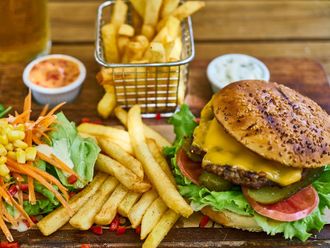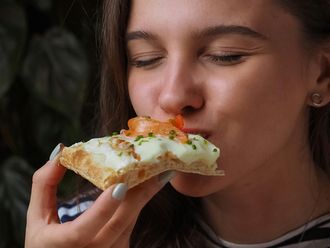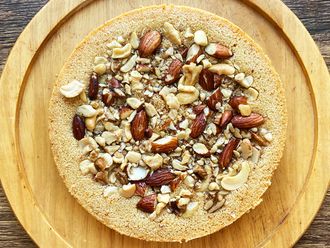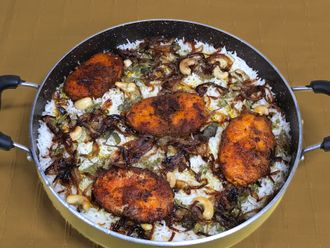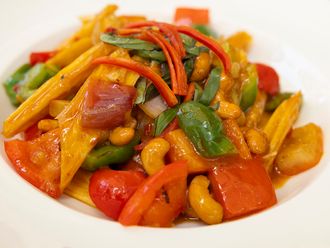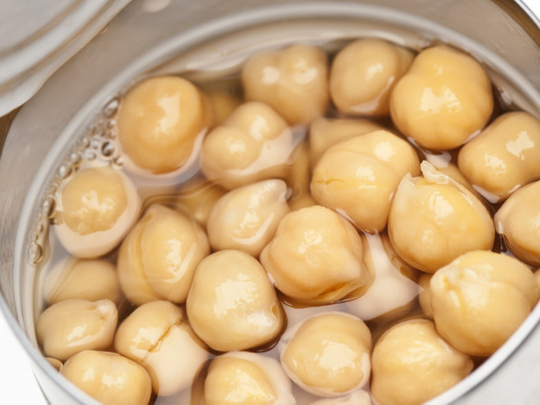
Vegans are, by necessity, a creative bunch. They grind almonds for milk and spin soy into cheese, ice cream and even some passable meat substitutes.
But replacing the egg, in particular the egg white, has proved especially tricky. The egg is a natural miracle, a combination of water and proteins that has proved all but impossible to mimic without turning to a chemistry set of industrial powders.
As a result, many vegans lived for years without the culinary wonders that egg whites produce. No pretty pastel macarons. No meringues. No angel food cake.
Then, in 2015, came a breakthrough: Goose Wohlt, an Indiana software engineer who had recently become a vegan, was charged with coming up with a way to make vegan meringues for the family ritual. An inveterate tinkerer — before food, his obsession was antigravity — he set to work, scouring the literature on proteins, starches and vegetable gums.
One night, his wife mentioned that she had seen a video of two French cooks using the liquid from a can of chickpeas to make chocolate mousse. He decided to try the technique for meringues.
Bingo. The liquid whipped up instantly into a snowy white foam. When he added sugar, it turned shiny and glossy, just like egg whites. In March, Wohlt, 41, posted his discovery to a Facebook group called “What Fat Vegans Eat,” and caused a small sensation.
Vegan meringues were not only possible, but a cinch. And the secret was something that cooks often pour down the drain. Wohlt named his magic ingredient aquafaba, combining the Latin words for water and bean.
Since then, aquafaba has become a quiet phenomenon. A new Facebook group dedicated to open-source experimentation, “Vegan Meringue — Hits and Misses,” has more than 44,000 members, and the first aquafaba cookbook is due out this autumn. (Wohlt even submitted his neologism for consideration to the Oxford English Dictionary.)
Chefs, both vegan and omnivore, are using aquafaba in everything from pancakes to purees. This month, Sir Kensington’s, a New York condiment company, is introducing the first commercial product using aquafaba, a vegan mayonnaise called Fabanaise.
“It’s a home run,” said Adam Kaye, the culinary director of Blue Hill at Stone Barns, who first used whipped aquafaba for wastED, the restaurant’s 2015 pop-up. “It’s delicious but it’s also something anyone can do. You don’t need to be Ferran Adria.”
To understand aquafaba, first you need to examine the egg. The yolk, according to Harold McGee’s culinary-science book On Food and Cooking, is a bag of water containing free-floating proteins and aggregates of protein, fat and cholesterol, which give it an extraordinary ability to emulsify and enrich.
The white is about 90 per cent water and 10 per cent protein. When whipped, those proteins unfold and bond together, trapping the air bubbles created by the whisk. This is what allows for relatively long-lived foams and, ultimately, delights like meringues, souffles and angel food cakes.
Before aquafaba, the most prominent egg-foam replacers were bubble-making agents such as baking powder or a mixture of baking soda and vinegar, or thick bubble-retaining whole foods like applesauce, mashed bananas and ground chia seeds. The problem was that none of these substitutes could do everything an egg could. You can’t make a meringue out of mashed bananas.
Commercial egg replacers, like Ener-G, offered a second option. Made from a mix of refined starches and leaveners, they allow cooks to make egg-white desserts, but many vegans complain that they taste like cardboard. The egg replacers also have to be cooked.
Saponins — the name comes from the Latin for soap — have long been known for their ability to stabilise bubbles much as emulsifiers do, gathering at the water-air interface in the bubble walls and holding them together. The Lebanese meringue-like dessert natef is made with saponaria officinalis, a saponin-rich root that is used for carpet cleaning as well as cooking.
Whatever the reason, aquafaba delivers. Dump a can of chickpea water into a mixer, and it froths instantly, like bubbles in a bath, and whips into stiff, glossy peaks. It retains a slight beany aroma in the bowl, but that disappears when cooked. There is no residual flavour, and few calories.
“It’s definitely cool,” said Tal Ronnen, the chef at the vegan restaurant Crossroads in Los Angeles. Where gallons of chickpea water used to be tossed out every week, the kitchen now uses whipped aquafaba to lighten pancakes, make macarons and create cocktails at the bar. (Aquafaba adds little significant nutrition; one recent analysis found about 1.8 grams of protein in three-quarters of a cup, and trace amounts of minerals.)
For Sir Kensington’s, aquafaba was a miracle. The market for vegan mayonnaise is booming. Sales have jumped in the last year to $34 million (Dh124.8 million) from $25 million, while remaining flat in the $1.8 billion traditional mayonnaise market, according to Spins, a retail sales data company. But the company couldn’t find a way to make one without resorting to protein powders, starches or gums.
“Our kitchen looked more like a lab than a kitchen,” recalled Mark Ramadan, a founder.
Over several months, testers worked up more than 200 formulas, but none tasted quite right. Pea proteins left a vegetal aftertaste, while a soy base tasted like emulsified edamame.
About a year ago, a company intern spotted an article about aquafaba on the website Food52 and took it to Laura Villevieille, Sir Kensington’s director of product. The team grabbed a can of chickpeas from the grocery store, and after four attempts, it had its benchmark.
“It immediately worked so much better,” Villevieille said. “It was much closer to our idea of what a mayonnaise should taste like, whether it was vegan or not vegan.”
The discovery solved one problem but created another. Unlike a home cook, Sir Kensington’s couldn’t start opening cans of chickpeas. It needed an industrial supply.
An executive at Whole Foods Market introduced Ramadan to the owners of Ithaca Hummus, an upstate New York company that follows the traditional method for making hummus, simmering the chickpeas rather than steaming them as some companies do. The aquafaba was waste product; now it is a revenue stream: This year, Sir Kensington’s will buy about 20,000 gallons of aquafaba to make its Fabanaise.
With the American market for hummus reaching $800 million annually, there’s a lot of aquafaba floating around, or more precisely down the drain. Many vegans, including Wohlt, predict that it is only a matter of time before new commercial products hit the market.
That could be a boon for vegans, though Wohlt said he hoped that product development continues to be an open and inclusive process, like the one that brought the world aquafaba in the first place. (No one appears to have secured patents related to aquafaba, but Sir Kensington’s has filed for three related to its mayonnaise and its methods for producing aquafaba.)
Right now, Wohlt said, he and other enthusiasts are hard at work figuring out how to make an aquafaba angel food cake.
“I made one the other day that separated from the pan,” he said. “With every experiment, we’re getting closer.”



